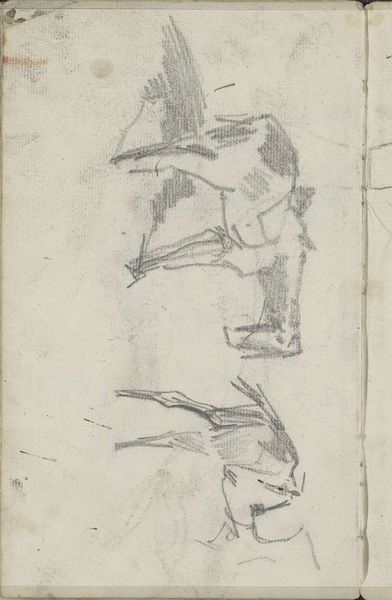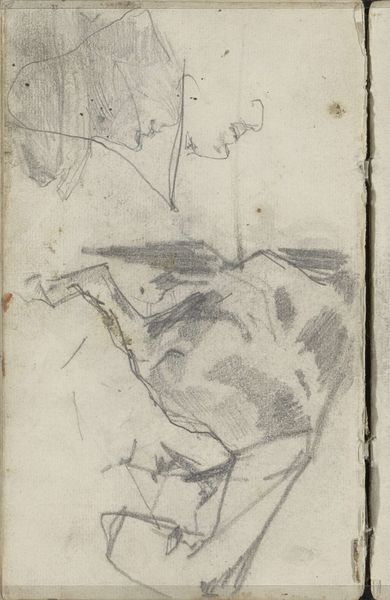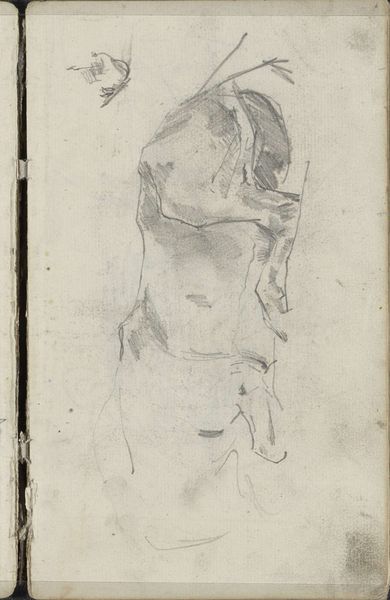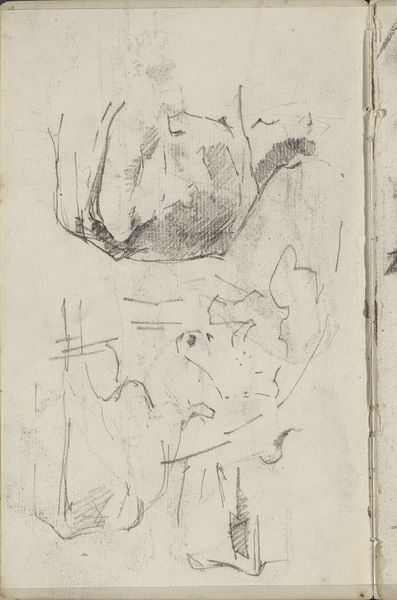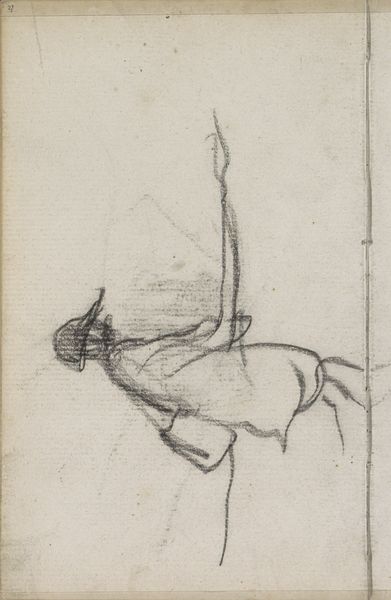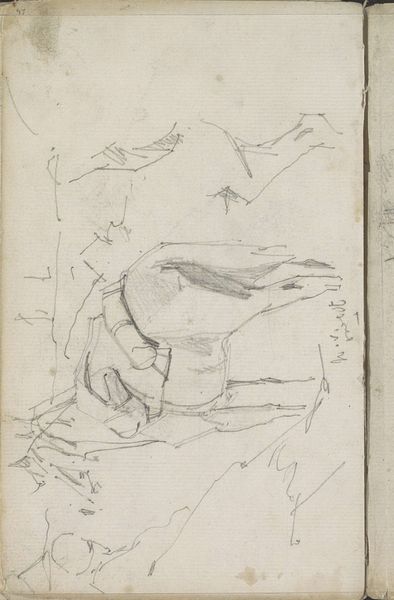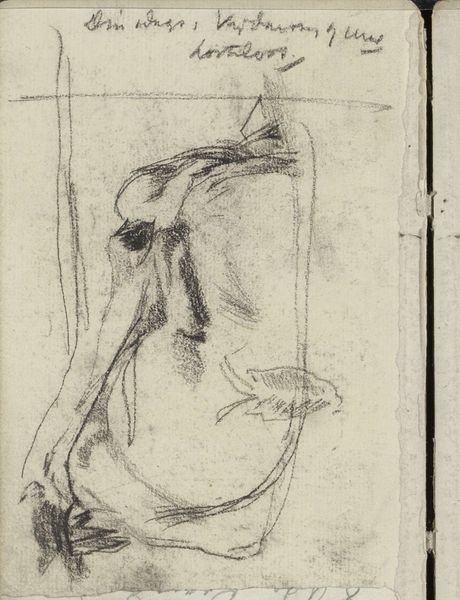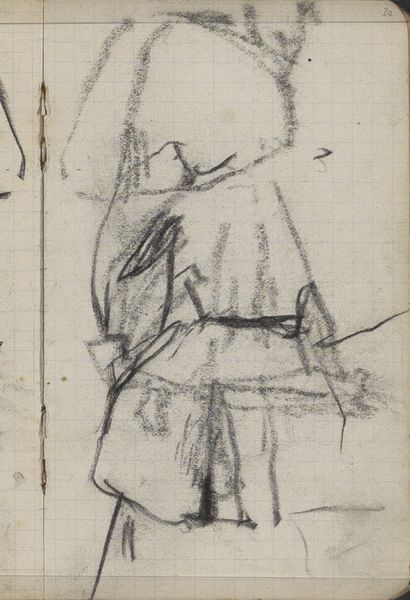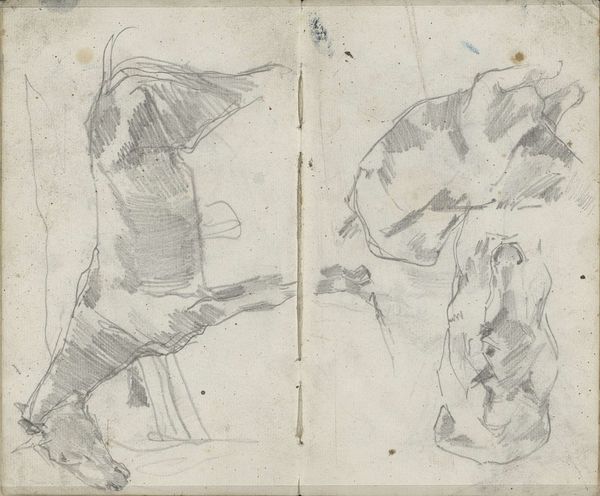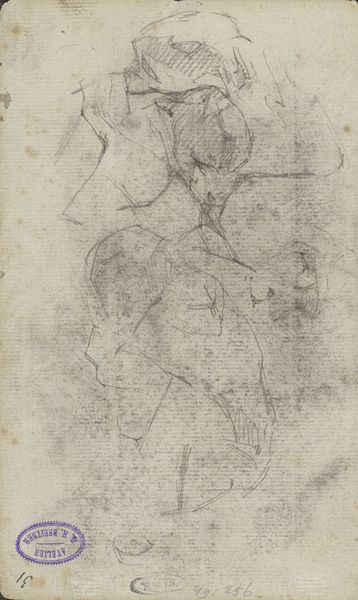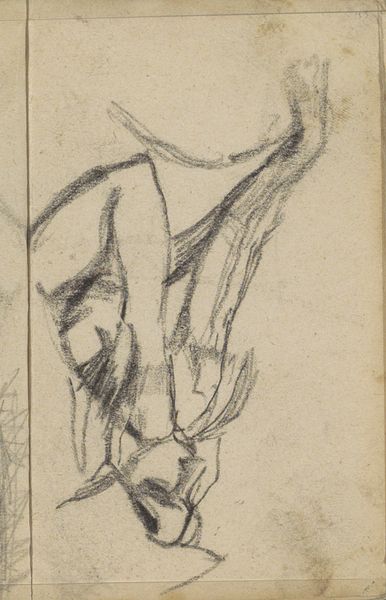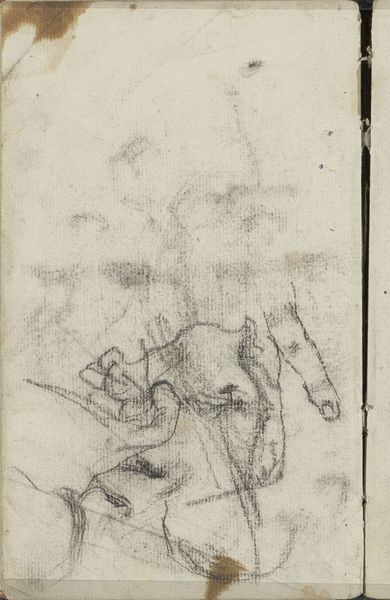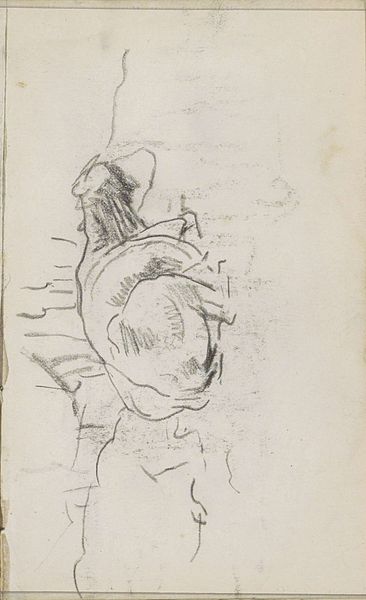
drawing, pencil
#
drawing
#
impressionism
#
pencil sketch
#
landscape
#
figuration
#
pencil
#
realism
Copyright: Rijks Museum: Open Domain
Curator: This is "Dier," a pencil drawing from 1883 by George Hendrik Breitner, found here at the Rijksmuseum. What strikes you first about this piece? Editor: Well, it’s clearly a preliminary sketch, all nervous energy and fleeting lines. There’s a raw, almost unfinished quality that makes it quite immediate. I'm also interested in how the artist uses the hatching and the white space to shape this beast. Curator: Indeed. Breitner was fascinated by the working-class life and animals of Amsterdam. He was deeply committed to portraying the everyday reality around him. I think in that way it makes us reflect about working animals from the time, the materiality of the animal body against its place of labor. Editor: I see how context informs it, certainly. But on the page, notice the dynamic composition: the diagonal thrust of the animal's form contrasted with the vertical lines used at its front leg; that seems purposefully done. Also, what kind of beast is this even meant to be? A horse perhaps? Or is it closer to a water buffalo? Its identity almost escapes clear designation, adding to that sensation of impermanence. Curator: The swiftness suggests that perhaps Breitner encountered this animal only briefly, perhaps laboring, hauling things around, then quickly disappeared in the urban crowd. It may tell us about the socio-economic situation surrounding those forgotten working animals, their fleeting lives quickly passed over in those days. It reflects on the society's disregard for labor as a whole and on a loss of contact between humans and animals. Editor: Possibly, or consider instead just the function of art-making: this hasty capturing—a mere impression—meant not as social critique necessarily, but rather primarily an act related to observation, seeing how form and light resolve in the animal figure, using a quick mode of inscription like drawing with a soft pencil on cheap sketch-paper. Curator: Perhaps a bit of both. These lines carry a dual message: about fleeting social conditions as well as the fleeting representation of quick draftsmanship. Either way, it is food for thought about art's capacity to record social reality in a flash. Editor: Yes, the immediacy is key; it freezes a passing impression into permanent form. This encounter between animal, the world and artistic execution results in a strangely moving record.
Comments
No comments
Be the first to comment and join the conversation on the ultimate creative platform.
